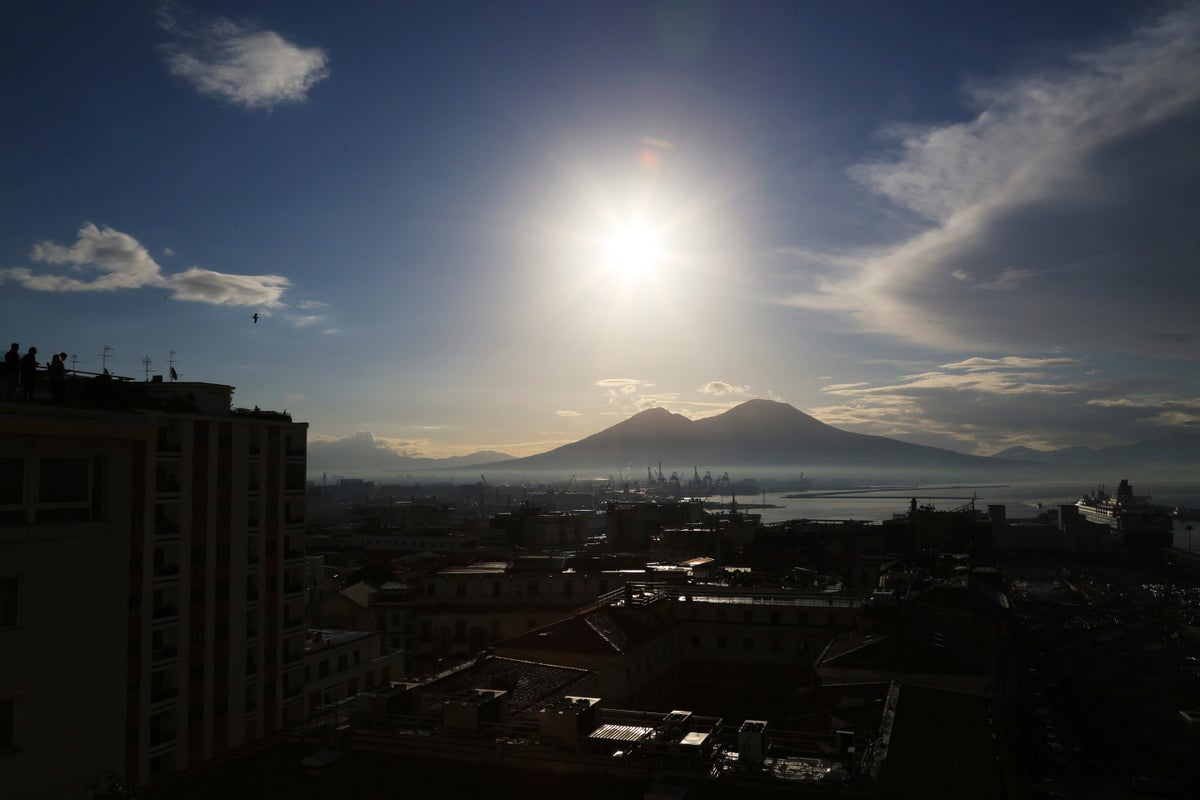
Hundreds of small tremors have shaken a densely populated volcanic area west of the Italian city of Naples in recent weeks, pushing the government to quickly redraft mass evacuation plans, even though experts don’t see an imminent risk of eruption.
In the latest of a long string of tremors, a 4.0-magnitude earthquake hit the region of Campi Flegrei (Phlegraean Fields) Monday. The region is home to a caldera, a cauldron-shaped depression left behind by the eruption of a very large volcano.
The one in Campi Flegri is the largest in Europe and last erupted in 1538. A new explosion would put half a million inhabitants at risk.
Monday’s tremor followed a 4.2-magnitude quake recorded last week, the strongest in the area for 40 years, according to the National Institute of Geophysics and Volcanology (INGV).
Experts at INGV have warned authorities and residents that tremors could intensify in the near future as seismic activity continues. However, they have clarified that the intensity of the tremors doesn’t imply an increased or imminent risk of a new eruption.
In a study published in June, a team of scientists at INGV raised the possibility that the caldera’s movements could rupture its crust. However, the study stressed there are currently no concrete reasons to anticipate a traditional volcanic eruption involving lava outflow.
’The seismic activity has been intensifying for months. We have observed over 3,000 tremors since the start of 2023,” Gianfilippo De Astis, senior researcher at INGV, told The Associated Press on Tuesday. “Only 65, however, were above a 2.0 magnitude.”
De Astis noted that these phenomena in the Campi Flegrei area – known as “bradyseism” -- have been going on for thousands of years, involving a “cyclical process of rising and falling of the level of ground,” which has been widely observed and measured.
The Campi Flegrei area extends west from the outskirts of Naples to the Tyrrhenian Sea. About a third is partially submerged beneath the Bay of Pozzuoli, while the remaining two-thirds are home to about 400,000 people.
The city of Naples is surrounded by volcanoes on both sides: Campi Flegrei to the west, and Mount Vesuvius to the east. Vesuvius is known around the world for having destroyed the ancient cities of Pompeii and Herculaneum when it erupted in 79 AD.
The recent string of tremors caused no damage or injuries, but raised fresh worries over the impact of an emergency evacuation of thousands of people, putting pressure on local authorities and the far-right government headed by Premier Giorgia Meloni.
Experts have advised Naples city council to conduct safety checks on hospitals, schools and public buildings.
Civil protection minister Nello Musumeci said on Tuesday that the government has accelerated the drafting of “exodus plans in the event of an emergency,” which should be discussed at the next cabinet meeting.
According to the evacuation plans in place, once the alert level has been reached, hundreds of thousands of people living in the most dangerous areas are to be transferred to other Italian regions.
But, in a 2022 study published by the National Research Council (CNR), a group of economists estimated that an immediate evacuation of the whole Campi Flegrei area – as described by the emergency plans -- would cost about 30 billion euros a year, with a negative impact on Italy’s gross domestic product of around 1%.
The risk of a volcanic eruption in the whole Southern Campania region – which includes Naples – would affect about three million people, situated in an area of about 15-20 kilometers from a possible eruption, the study says.
“No doubt that the plans need to be updated, but that’s a complex issue,” De Astis said in a telephone interview. “For sure, escape routes have to be enlarged to allow a quicker exodus. The government should definitely act on the infrastructure side.”
But the “psychological factors” are much more unpredictable, he added.
“We have historical experiences of eruptions where citizens refused to leave their homes and preferred to stay and eventually die there. What are we supposed to do in that case?”







